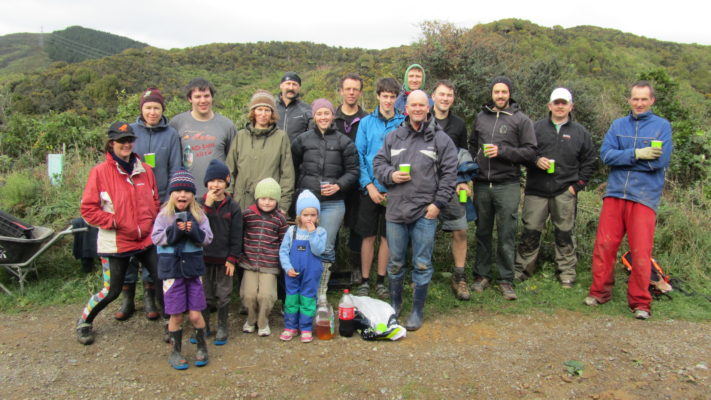Community conservation is in trouble and without clear objectives and support structures the risk of volunteers losing interest is high, according to a new report commissioned by Predator Free New Zealand Trust.

The report by leading researcher Dr Marie Brown from The Catalyst Group, highlights the need for adequate support structures for community conservation; a clear strategy for outcomes to be monitored against; and streamlined funding processes that are prioritised based on ecological need and other objectives.
“Conservation volunteers provide a huge resource in our war on predators” says Predator Free New Zealand Trust chairman Sir Rob Fenwick, “but they are poorly supported and largely unacknowledged.”
“To retain their energy and ensure they are being as effective as they can be, we need to be a bit more strategic about where they fit in predator projects and streamline funding processes to support them” he said.
The report draws on the previous Parliamentary Commissioner for the Environment, Dr Jan Wright’s, penultimate report “Taonga of an Island Nation” which raised issues around the funding environment for community groups as well as support structures to help alleviate administrative burden. The report recommends a national network of regional hubs to help support community conservation groups in each region. There are core services that all community groups are doing (and don’t necessarily want to) that a centralised support structure could alleviate.
It also recommends an updated strategy so that funding can be aligned with ecological need. Lack of clear strategy means effort and funding is not being aligned with priority. Volunteers have various reasons for the work they do and ecological outcomes are just one of those but if we want to encourage effort into high priority sites then we need to align funding with ecological outcomes to achieve our goals. Funders aren’t sure how to best fund conservation, where they should put their funds and what questions they should ask to report successful outcomes against objectives. If agency funders, such as DOC, MFE, DIA etc aligned their funds with priority and outcome then it would provide a framework for others to follow.
Interest in community conservation has never been higher but we aren’t winning the fight against biodiversity loss and if we do what we’ve always done we will face more extinctions. Volunteers want their efforts to make a difference so if we are able to show where clear outcomes can be achieved and direct funding to those places we can be more strategic in our efforts. Community conservation is not the same as agency-led conservation – it usually lacks the scale, expertise and financial backing to undertake transformative conservation alone. This means it is a complement to agency-led efforts (rather than a replacement) and this report offers solutions and recommendations with that in mind.
Sir Rob says “these wonderful people give up their weekends to protect our ailing biodiversity. We need to ensure their efforts achieve the best outcomes we can.”
Download the report (PDF, 2.7MB).

